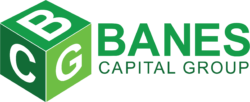Jobs, More Jobs, Jabs,
and Records
Despite inflation, COVID variants, and deep suspicions about trusting the vaccine jabs, records have been set in equities and economic data. As unlikely as an ‘up close’ would have seemed on Monday with global stocks breaking lower as the Taliban seized control of Kabul, Afghanistan, the Dow Industrials and S&P turned large early losses into a gain. The Dow had been down 283 points in early trading. That had temporarily given the ‘buy any dip’ crowd yet another victory. For stocks, that set 5 record highs in a row – but it’s been all downhill since then with the Dow losing ground every day, though the S&P and Nasdaq closed marginally higher today.
Quick Links
While it’s true that inflation has been digging in in a ‘non transitory’ fashion and consumer confidence has been waning, the U.S. Unemployment Rate dropped from 5.9% to a fresh pandemic low of 5.4%. Before the Trump administration saw Unemployment drop to the lowest levels since World War II – with a 3.5% print just before the arrival of COVID–19, the Fed and many economists considered an unemployment rate near 5% to represent full employment. After writing that, we had to add that Boston FRB President Eric Rosengren said there were different criteria for tapering asset purchases and raising rates. He said: “5.4% can’t be considered full employment.” Data is improving though. Initial Jobless Claims just fell to a new pandemic low and those on benefits fell under 12 million.
Unemployment spiked to 14.8% in April 2020 as the economy was shut down but has made headway since then. Recall that the National Bureau of Economic Research declared that the 2020 recession ended in April 2020 having lasted only 2 months for the shortest such event in U.S. history. Long term unemployment fell by a record 560,000 Americans in July. June’s data was revised 88K higher to 938K and July payrolls beat expectations by 73K with 943K jobs added! A few days before, ADP Employment data for private payrolls had ‘missed’ by coming in by less than half of the 690K expected. The leisure and hospitality sectors led the way in job creation. The greatest danger at this point seems to be from those continuing to force vaccine and mask mandates on workers as conditions for employment. While that might not seem to be a great concern for the service industry given the number of jobs available, health workers have been losing their jobs on reluctance to be vaccinated. The vaccines are not yet FDA approved, and there are unanswered questions about the necessity for those that have already survived COVID infection. As of June, there were a new record 10.073 million jobs available as the JOLTs data rose from May’s 9.483 million. Some Fed members estimate the economy is roughly 8 million jobs short of pre–pandemic levels. Those without jobs in July were listed at 8.702 million leaving 1.37 million excess jobs! So … apparently long–haired freaky people can get a job, but you’ve got to have a membership (vaccine) card to get inside. In another of those themes that may have sticking power, we expect that a number of people will quit their jobs rather than to take the vaccine.
The U.S. Treasury’s July deficit of $302 billion was a record for that month. Another record came in Consumer Credit which rose the most ever in June. Far overshooting estimates of a $23 billion pickup, credit increased by $37.69 billion as Americans employed credit cards for purchases.
As for ‘broken records’ of the repeating over–and–over kind, investors continue to seek answers regarding when the Fed will begin to taper asset purchases. The Fed’s minutes from their July 28th meeting said most of the participants thought they could start reducing purchases this year from the economy making “substantial further progress” on goals of price–stability – and being close enough for the Fed to be satisfied on maximum–employment. The Bond Market Review expects an announcement in September with an October or November initial tapering. We don’t expect rates to lift off until well after purchases reach an end. The economy grew around 6% in Q2 and the Atlanta Fed’s GDP–Now forecast for Q3 has been running just above 6%. We wonder why any central bank would have a QE program with that type of growth. Why not save that powder for a turndown?
Looking Ahead
- Equity cycles show a pullback into another low near August 20th
- Bond yields should begin to trade higher into August 23/24 and then drop into a low near September 2nd.
Richmond FRB President Thomas Barkin said: “We will get there in the next few months.” He said we are closing in and when we do “I am very supportive of tapering and moving back toward a normal environment as quickly as the economy allows ” FRB Minneapolis’s Neel Kashkari at least set a bar! He said: “If we see a few more jobs reports like the one we just got, then I would feel comfortable saying yeah, we … maybe haven’t completely filled the hole that we’ve been in – but we’ve made a lot of progress, and now, then will be the time to start tapering our asset purchases.” The Fed will only see one more monthly payroll report for August before their September meeting.
Bond yields remain low amidst global strife and uncertainty – despite the Fed’s hawkish intentions to taper asset purchases. Yields should trade a little higher into August 23rd/24th and then make another low near September 2nd. Last week, yields were unchanged at 2–years, .5 bps higher at 5–years, and lower by 2 and 1.5 bps at 10 and 30– years. Yields were 1 bps higher through today at 2–years, but lower by .5, 3.5, and 5.5 bps at 5, 10, and 30–years. A few weeks ago, 30–year Freddie Mac mortgage rates fell 3 bps to 2.77% – the lowest in nearly 6 months. Since then, they jumped 10 bps to 2.87% but then eased back to 2.86%. 15–year rates bottomed at 2.10% and rose to 2.16%.
In June, China’s holdings of U.S. Treasuries fell for a 4th month – but overall, foreign entities increased long–term U.S. assets by $110.85 billion. $10.9 billion of that increase was in Treasury bonds. A net $31.51 billion flowed into all types of U.S. assets.
The Treasury’s Monthly Budget Statement revealed a July–record $302 billion shortfall. That was over 379% of the 2020 level and the $3.02 trillion fiscal deficit 10 months in is running 9.52% behind the same–period 2020 level, which ended at a record $3.13 trillion. An overabundant supply of dollars allowed the Fed’s Overnight Reverse Repo program to rise above $1 trillion for the first time at the end of July. That program to park overnight money had only breached $400 billion a few times 4 to 5 years ago. Another record $1.087 trillion was used last Thursday (08/12) and then $1.116 trillion was used on Wednesday (08/18).
Last Tuesday (08/10), the U.S. Treasury sold $58 billion 3–year notes at .465%. Demand was very good and the buying group that includes foreign central banks accounted for 55.4% of the issuance versus 53.2% in July. That was the highest allocation since October. The following Wednesday (08/11), $41 billion 10–year notes were sold at 1.34% the lowest yield since February. Demand was exceptional and the best since May 2020. A very large 77.2% went to foreign entities versus 63.5% last month. Dealers were left with a record–low 9.6%. That Thursday (08/12), $27 billion 30–year bonds brought 04%. Demand was only marginally better to July and foreign allocations fell to 60.7% from July’s 61.1%. Wednesday’s (08/18) 20–year bond auction brought 1.85% for $27 billion in supply. Demand was very good and foreign buying rose from 60.2% in July to a 2021–best 62.3% of this auction. Next week, the U.S. Treasury will auction $60 billion 2–year notes on Tuesday (08/24) and then $61 billion and $62 billion 7–year notes (both) on Wednesday (08/25). The Treasury has been downsizing T–Bill (shorter maturity) auctions.
Economics
The number of Americans receiving some kind of government or unemployment benefits fell below 12 million for the first time since the pandemic – huge especially considering that one year ago that reading was 28.67 million. Initial Jobless Claims fell by 12, 10, and 29k over the past 3 weeks – leaving the result at a pandemic low 348K! For the last week of July, Continuing Claims fell a record 316K. They then fell 81K and 79K to reach a new pandemic low of 2.82 million. The ‘outlier’ came from ADP Employment Change which increased by only 330K for private payrolls – less than half expectations and the least since February. Challenger Job Cuts were 92.8% lower than July 2020 so the other data remained very promising. July did not disappoint as the economy added the most jobs since last August. Hospitality and Leisure led the way and Education did well. 943K jobs beat the 870K expected and 88K jobs were added to June – with a 2–month revision of +119K jobs. Private Payrolls beat the ADP 330K with 703K jobs and were revised 107K higher for June. Manufacturing added 27K and June data was revised more than double – from 15K to 39K! The U.S. Unemployment Rate fell from 5.90% to 5.40%. The Labor Force Participation Rate rose .10% to 61.70%. Average Hourly Earnings rose by .40% with the yearly pace accelerating from 3.70% to 4.00%. Weekly Hours remained at 34.8. The Underemployment Rate fell from 9.8% to 9.20%. Small Business confidence fell 2.8 points to 99.7 as businesses had to raise wages to attract employees and 49% said they couldn’t fill openings!
Despite some job progress, confidence fell with concerns about the delta variant, new mandates, more closings and restrictions on commerce. The CDC went so far to term a new “pandemic of the unvaccinated.” Weariness led to the University of Michigan’s sentiment survey dropping 11 points to 70.2 – the lowest in almost a decade. Current Conditions fell from 84.5 to 77.9 and Expectations dropped from 79 to 65.2. Their short–term inflation measure fell .10% to 4.60% – but that’s still very hot! On the other side, Consumer Comfort hit the highest level in 8 weeks – up 1.9 points last week to 56.5. Personal Finances were the best since February 2020 – increasing 2.5 points over the past 2 weeks to 70.3. The Buying Climate hit a 7–week high, improving 1.9 points to 47.2. The Philadelphia Fed Business Outlook dropped from 21.9 to 19.4 but Empire (New York) Manufacturing tumbled from 43 to 18.3! The drop was blamed on higher costs and prices. July’s Leading Index rose .90% while June’s was revised .20% lower to .50%. Wholesale Inventories rose 1.10% in June and Trade Sales were up by 2.00%. Business Inventories rose .80%.
Atlanta FRB President Raphael Bostic still holds the ‘transitory’ inflation view with many of his cohorts. He said: “Obviously, we have seen inflation rise above 2% as the economy recovers from the pandemic downturn. But most of that rise is fueled by forces that should recede over time. So, I expect price inflation to average close to our target over the longer term.” We don’t disagree that inflation will return to a 2% range at some point – but we do differ on the plateau. If prices increase by 10% to 20% – or even double, and then rise at a 2% pace as inflation moderates, that will be far from transitory. It will be difficult to explain why something that was $2 and then $4 is transitory when the price then only increases 2% from the $4 level. That’s more permanent – even if the pace of appreciation does subsequently return to the Fed’s long–run goal. We’ll have to see how that’s explained!
Americans were receiving less stimulus and also turned spending to services – leading to a 1.10% drop in Retail Sales for July. That was far beyond the .30% drop expected. Ex autos, sales fell .40%. The lack of stimulus probably sent many to credit card spending. Consumer Credit rose $37.69 billion in June. May was revised $1.5 billion higher to $36.69 billion. In June, credit card debt rose by the second most on record.
As the payroll numbers would bear out for the sector, the ISM Services Index rose from 60.1 to 64.1 – expanding at a record pace in July. Industrial Production jumped by .90% in July – rising a 5th month and returning to pre–pandemic levels. Capacity Utilization rose from 75.4% to 76.1%. Q2 Nonfarm Productivity rose 2.30% (less than the 3.20% expected) and was revised 1.1% lower to 4.30% for Q1. Q2 Unit Labor Costs rose by 1.00% and were revised from +1.70% for Q1 to –2.80%, for a large swing.
The Trade Balance deficit hit a record $75.7 billion in June – which can be viewed many ways. On the positive, it means Americans are expected to continue consuming. It also means costs are going up! Imports increased by 2.1% while exports only rose .6%. In July, Import Prices rose .30% (and .10% ex petroleum). The annual price increase fell from 11.30% to 10.20%. Export Prices rose 1.30% and increased annually from 16.90% to 17.20%. The Fed’s Underlying Inflation Gauge rose from 3.56% to 3.73% increasing by nearly 2% since February’s 1.74%. Consumer Prices are not easing. They rose again at a 5.4% annual pace in July with a .50% monthly increase. The core (ex food & energy) rose .30%. Core CPI did ease from 4.5% to 4.3% annually – but that is far from and well above the Fed’s 2% goal. As inflation digs in, Real Weekly Earnings fell by .70% in July after a 1.0% year–over–year drop in June. Real Average Hourly Earnings (again net of inflation) fell by 1.20% after June’s 1.6% annual drop. While some said CPI ‘moderated’, Producer Prices solidified their advance. July PPI rose 1.0%, taking the annual pace from 7.3% to 7.8%. Core PPI also rose 1.0%, though the annual core PPI was a little lower – increasing from 5.6% to 6.2%.
With home prices surging by a record 23% rate through the second quarter, buyer traffic fell to the lowest levels since July 2020. Homebuilder sentiment fell for a 3rd month as the NAHB Housing Market Index fell from 80 to 75 for the largest drop since April 2020 and to the lowest level in 13 months. Supply shortages and higher prices are taking a toll. Some industry data did improve. Q2 Mortgage Delinquencies dropped to 5.47% (from 6.38%) and MBA Mortgage Foreclosures fell to .51% (from .54%). The MBA said this was the lowest foreclosure rate since Q4 1981 and the lowest delinquency rate since Q1 2020! Housing Starts fell by 7.03% in July to a 3–month low of 1,534K annual units. Building Permits rose 2.57% to an annual 1,635–unit pace.
We’ve already got homebuilder confidence and housing starts – and other housing sales data is coming soon. Monday (08/23) gives us the Chicago Fed National Activity Index and Existing Home Sales for July. Tuesday follows with the Richmond Fed Manufacturing Index and New Home Sales for July. Wednesday brings July Orders for Durable & Capital Goods and MBA Mortgage Applications (which rose 2.80% and then fell 3.90% over the past 2 weeks). Thursday updates Q2 GDP and also provides jobless claims data and Kansas City Manufacturing.
Equities
As we wrote earlier, stocks gained the last 4 days of the week into August 13th, with many indexes setting new record highs – some each day. Stocks got a boost out of the cycle that bottomed on the 5th, and the next low is due on the 20th. We can’t rule out a rally into early September as stocks have a seasonal tendency to trade up into and sometimes just beyond Labor Day. Stocks could have been far worse into today but once again reversed early losses to close higher for the S&P and Nasdaq. The Dow extended to 3 losers and is 1.75% or 621.26 points lower for the week.
Last week, the Dow gained 306.87 points or .87% to 35,515.38. The S&P rose .71% but is 1.39% lower this week. The Nasdaq lost .09% and is off another 1.90% this week. The Dow Transports had a great week with a 2.93% gain but erased most of it through today with a 2.73% loss. Bank stocks gained 2.01% but have plunged 4.36% this week.
Other Markets
When we used our ‘all that glitters’ theme in the last BMR, little did we expect gold to get slammed – but even real gold fails to shine at times. Gold fell 2.06% over the past 2 weeks and had fallen 7.67% in August to a 5–month low on the 9th. Gold made a triple low near 1,675/oz. but has rallied back against that support zone that has held since April 2020. Gold is .28% higher this week to 1,780.20/oz.
Crude Oil has fallen 15.61% in August to the lowest levels in 3 months. Crude lost 7.67% and then gained .23% over the past 2 weeks but is 6.94% lower this week. Likewise, Commodities lost 1.65%, gained 1.15%, and then fell 3.64% into today.
The U.S. Dollar broke through the March highs today to hit 9–month highs as the Fed minutes were deemed ‘hawkish’ and the markets baked in the beginning of Fed tapering later this year. The Dollar gained .35% over the past 2 weeks and is 1.16% higher this week. The Japanese Yen gained .60% last week but is .14% lower this week. The Euro gained .30% last week but has tumbled 1.03% this week. Corn rose 2.39% last week but was 3.21% lower through today. Cotton rose 3.02% last week but is 1.83% lower this week. Silver had risen sharply to $30.35/oz. into February but recently tumbled 26.5% to the lowest levels since November 2020, and has recently been struggling to hold above $23/oz.
Speaking of breaking records – I’m so glad the Olympics is over! All that running – and jumping – and swimming – and rowing was wearing me out!
However, we can all learn a valuable lesson:
“Desire is the most important factor in the success of any athlete.” Willie Shoemaker
Doug Ingram, Financial Economist
Additional Information is Available on Request
Banes Capital Group, LLC (BCG) has been granted permission by the author, Doug Ingram and Strategic Technical Initiatives, to distribute this market commentary (MC). All views, opinions and estimates included are his as of this date – and are subject to change without notice. Mr. Ingram’s views, opinions, and estimates are not necessarily those of BCG and there is no implied endorsement by BCG of any of the information contained within this MC (which may in fact directly conflict with those being published and distributed by BCG, whether or not contemporaneous). In the event of such conflict, BCG is not under any obligation to identify to you any such conflicts. This MC is for informational purposes only and does not constitute a solicitation or offer to buy or sell any securities, futures, options, foreign exchange or any other financial instrument(s) and/or to provide any investment advice and/or service. Although the information presented has been obtained from sources believed to be reliable, we cannot guarantee or assume any responsibility for the accuracy or completeness of the information shown herein.







